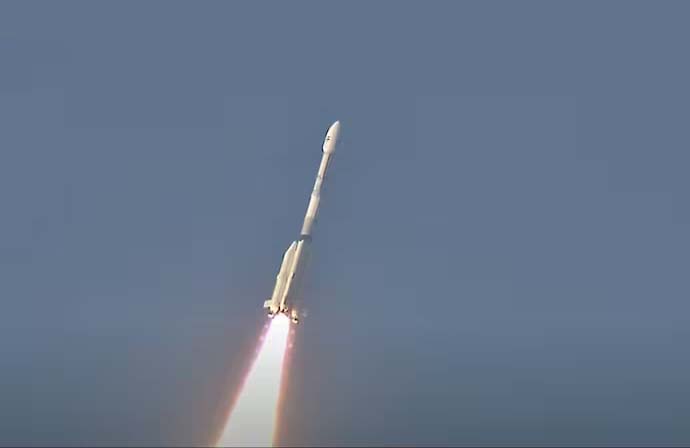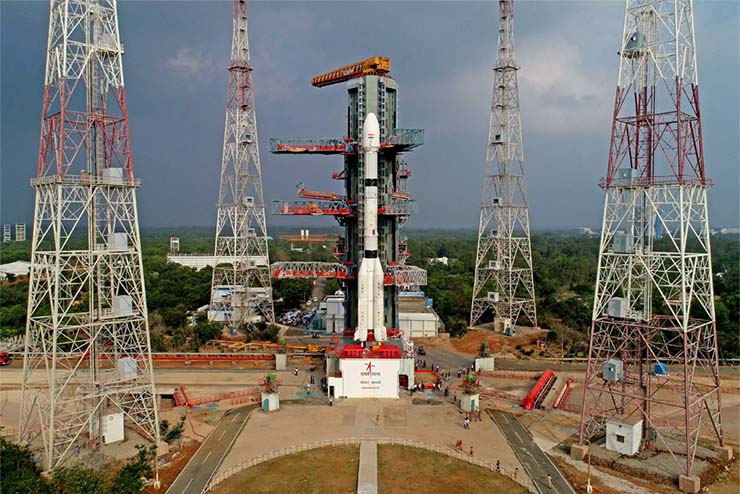
New Delhi: The meteorological satellite INSAT-3DS onboard a Geosynchronous Launch Vehicle was successfully launched from the spaceport in Andhra Pradesh’s Sriharikota on February 17 by the Indian Space Research Organisation (ISRO). Designed for enhanced meteorological observations, the satellite is a follow-on mission of the third-generation meteorological satellite to be placed in a geostationary orbit.
“GSLV-F14/INSAT-3DS Mission: The vehicle has successfully placed the satellite into the intended geosynchronous transfer orbit,” the ISRO tweeted. The satellite weighing 2,274 kg would serve various departments under the Ministry of Earth Sciences including the Indian Meteorological Department (IMD), ISRO said.
This is the second mission for the ISRO in 2024 after the successful launch of PSLV-C58/EXPOSAT mission on January 1. INSAT-3DS satellite will augment the meteorological services along with the presently operational INSAT-3D and INSAT-3DR satellites.
“I am very happy to announce the successful accomplishment of the mission GSLV-F14 INSAT-3DS. The spacecraft has been injected into a very good orbit. We also noted that the vehicle has performed very well. Congratulations to everyone who has been a part of the team…,” said ISRO chairman S Somanath on the launch of INSAT-3DS meteorological satellite.
Soaring majestically from the second launch pad at the spaceport, the 51.7 metre tall GSLV-F14 left behind thick fumes on its tail and saw thunderous applause from spectators who had gathered at the gallery here.
“The next generation weather satellite INSAT 3DS with improved capability over the existing INSAT series in orbit will augment the capability of various atmospheric parameters that leads to information related to weather and climate,” ISRO Chairman added.
Equipped with cutting-edge payloads and top-notch data collection, the new satellite will aid in monitoring land and ocean surfaces for near-precise weather forecasting and disaster warnings. The primary objectives of the mission are to monitor Earth’s surface, carry out oceanic observations and its environment in various spectral channels of meteorological importance – to provide the vertical profile of various meteorological parameters of the Atmosphere. Among others, it will provide the Data Collection and Data Dissemination capabilities from the Data Collection Platforms (DCPs), and to provide Satellite Aided Search and Rescue services.

“We congratulate ISRO on the successful launch of the INSAT-3DS meteorological satellite. At Godrej Aerospace, we are proud of our association with this mission, contributing to manufacturing of the 2nd stage Vikas engine and upper stage Cryogenic engine thrust chamber. This achievement reflects our commitment to advancing India’s space journey using indigenous expertise. The INSAT-3DS satellite launch improves weather forecasting and disaster management, enhancing our capabilities for Earth monitoring and meteorological data collection,” said Maneck Behramkamdin, SVP and Business Head, Godrej Aerospace.
Highlighting Godrej Aerospace’s partnership with ISRO, Behramkamdin said, “We are honoured to continue our partnership with ISRO that started in 1985, as we collaborate to push the boundaries of India’s space exploration. We are excited about the future opportunities and are committed to playing a pivotal role in shaping India’s space industry.”
The INSAT-3DS satellite data to provide improved weather forecasts and meteorological services will be used by several departments of the Ministry of Earth Sciences (MoES) such as the India Meteorology Department (IMD), National Centre for Medium-Range Weather Forecasting (NCMRWF), Indian Institute of Tropical Meteorology (IITM), National Institute of Ocean Technology (NIOT), Indian National Centre for Ocean Information Services (INCOIS) and various other agencies and institutes.
Debanik Roy, senior Scientist and Group Head, Division of Remote Handling and Robotics, Bhabha Atomic Research Centre, Department of Atomic Energy, Mumbai commented, “This particular satellite will be doing a lot of advanced research and helping for the weather forecast of our country….”.















